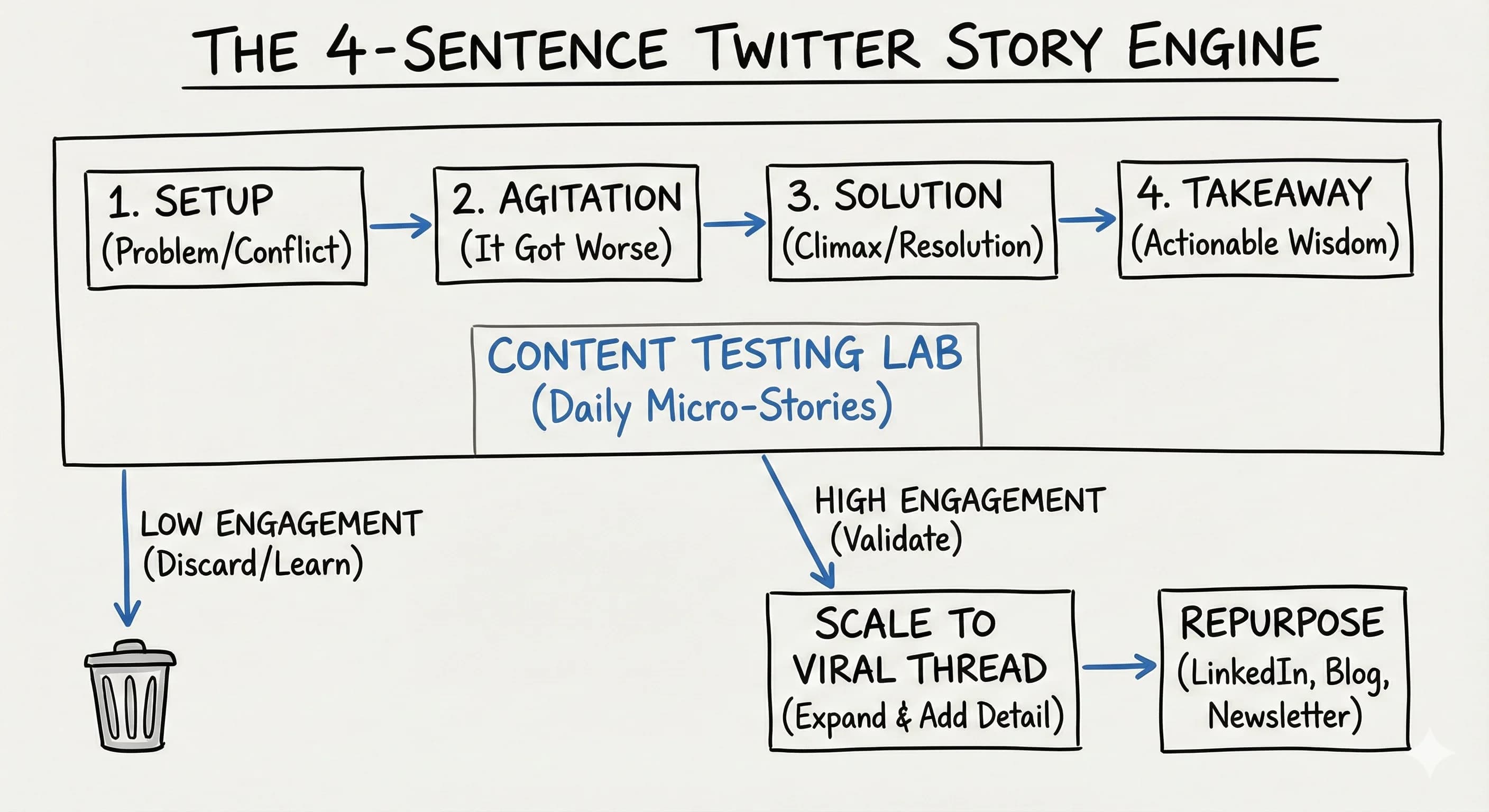The 4-Sentence Story Structure for Twitter Content Creators
Master the 4-sentence story structure that helps content creators test ideas on Twitter before scaling to viral threads. Turn micro-stories into engagement.
•6 min read
Details
Topic:
Platforms:

Loading content...

